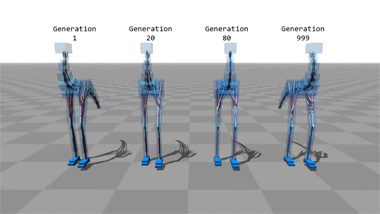"the drum is filled with hot steam and then sprayed with cold water. the pressure on the outside of the drum is far more than inside. the pressures try to maintain and find balance taking the drum as a casualty."
I really love the suddenness with which the drum "recoils" - it's as if it's alive and reacting slightly belatedly to the water, or as if the drum were an animated character and the animators were chemistry and physics themselves. I'll have to refer back to this drum next time I animate a character reacting suddenly to something.
I didn't have time to research this area in great detail, but I found two artificial lifeforms designed to simulate the movements of living things, and the accuracy (or lacktherof) of that simulation is fascinating. First is this robot, Spot, made by Boston Dynamics - you can see how it got its name, as it simulates a dog's walk fairly accurately. The part I find most interesting is the way it stumbles in response to being kicked at the 0:28 mark of the video - it briefly struggles to regain its footing in much the same way a real quadruped would.
While this isn't quadruped locomotion, it's too fascinating not to at least mention. These are computer programs that taught themselves how to walk - I found this GIF on Imgur and while I looked for more information about the project, unfortunately all I could find out was that Steve Grand, creator of the video game Creatures, is attached to it.
Even so, the learning curve these programs went through is evident in the GIF: Generation 1 obviously only manages half a step; Generation 20 masters taking a few steps but fails to keep its balance for very long; Generation 80 solves that problem by swinging its neck and tail to generate equilibrium; Generation 999 manages to walk without that exaggerated swing.
Generation 80 definitely has the most characterful walk. I feel an incredible urge to animate my character Ikki (see here) walking using it as reference.


No comments:
Post a Comment